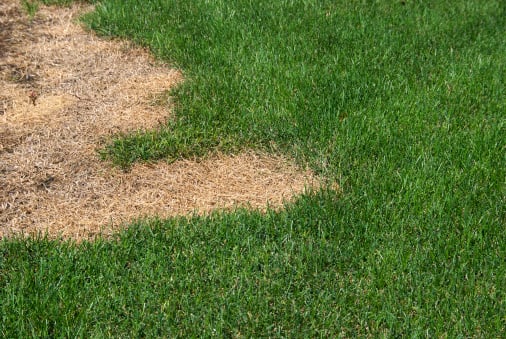You deserve to have a house with a beautiful, vibrant and healthy yard. OrganicLawns provides local lawn fertilization services that transform your yard into a luscious carpet of deep green grass.

As much of an annoyance as lawn fungal diseases may be, they become an even greater problem when you realize just how difficult they are to get rid of and how obvious they are to onlookers. Once you begin developing brown patches and dollar spots, you need to take action immediately — and ideally, you’d address these issues before they ever get on your radar. Fungicide treatments are the best way to tackle fungal diseases that may impact your lawn, but it isn’t always easy to know when you should start considering these kinds of treatments.
If you have a fescue lawn, you may be at greater risk for brown patches once heat and humidity begin to be a problem (which is right around the time summer rolls around, mind you). The cause is a soil-borne fungus called Rhizoctonia solani, and it can lead to one of the most destructive and fast-acting lawn diseases around.
Initially, you’ll notice brown circles of dead grass. While heat and humidity cause the biggest issues, it’s actually the transitions between these conditions that are most destructive. Late spring and fall are times when your lawn will come in and out of dormancy and may be affected by brown patch.
Rhizoctonia solani doesn’t just cause brown patch — it can also cause zoysia patch, which is a different fungal disease that impacts lawns. It’s also most apparent in the fall and spring and builds up in the lawn’s thatch, which is the undecomposed organic matter that sits above the soil line.
You’ve noticed discoloration on your lawn. Now what? Take more care with your watering, being sure to never overwater. In fact, you’re going to want to water infrequently but water deep when you do so, preferably in the morning. Mow your lawn regularly, but avoid doing so when the grass is still wet.
Remove grass clippings and thatch as soon as you can. This helps increase air circulation and maintains the proper nitrogen levels for your lawn to thrive. If the condition worsens, contact a lawn specialist who can bring in a fungicide treatment to get the job done once and for all.
Since 1996, OrganicLawns has earned a reputation for itself as the finest organic lawn care company Maryland has to offer. The only thing we value as much as following ethical and sustainable lawn care practices is our customers. Consider hiring us to service the lawn of your MD home. You can count on us to ensure you have a lush, green lawn and provide the highest standard of customer service.
If you are in search of reliable lawn care services in Maryland, contact OrganicLawns. We offer quality service and products at an unmatched price. Let us help you feel confident in your property. If you’re interested in having your lawn treated organically by a family-owned and operated local business, contact us for a free lawn estimate, or give us a call at 410.995.9722.